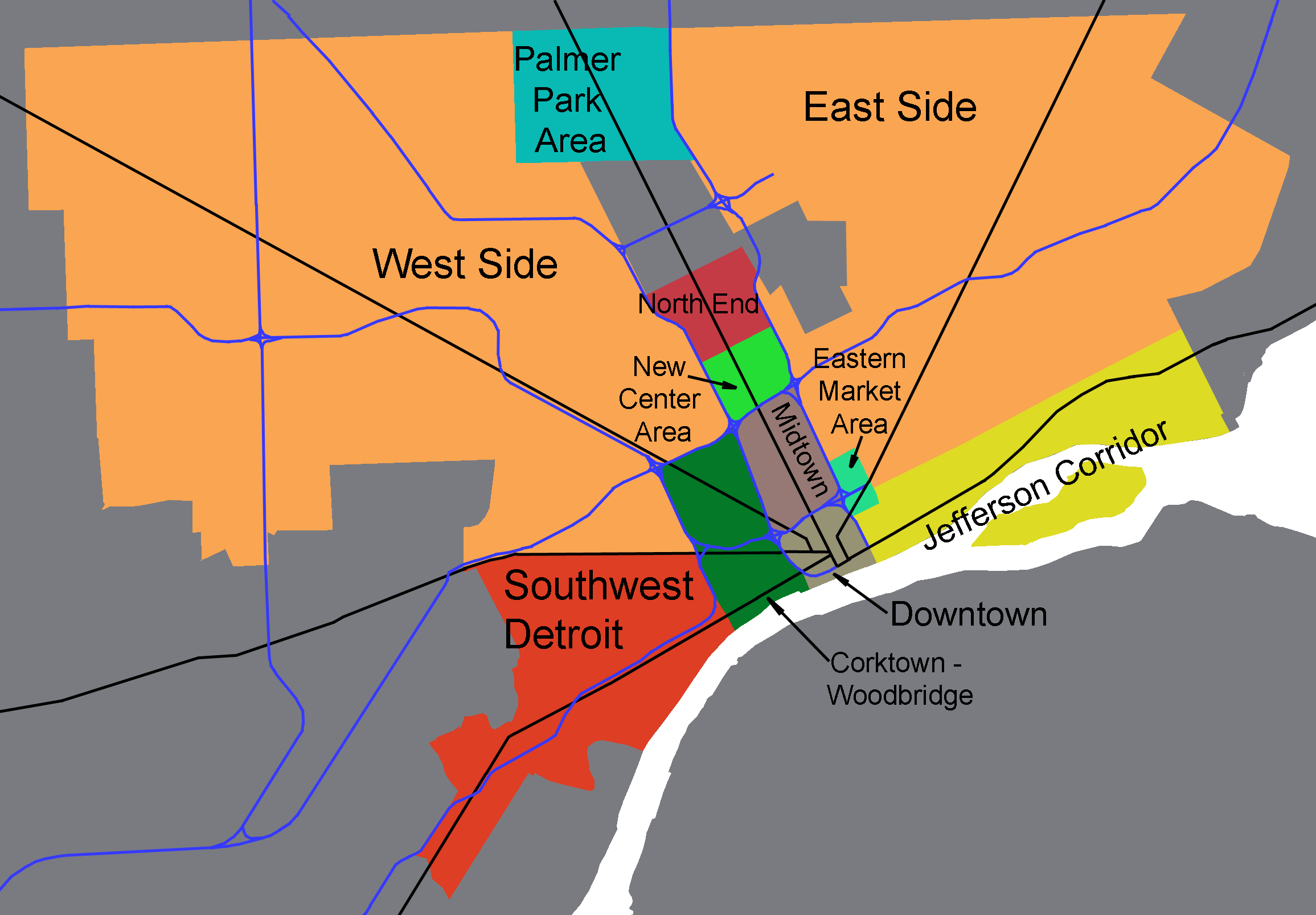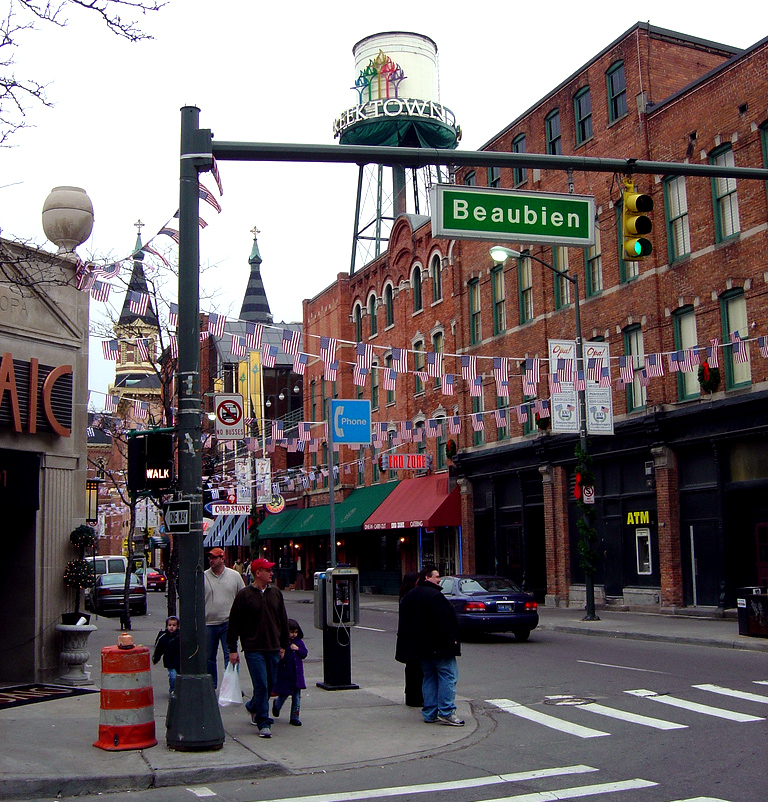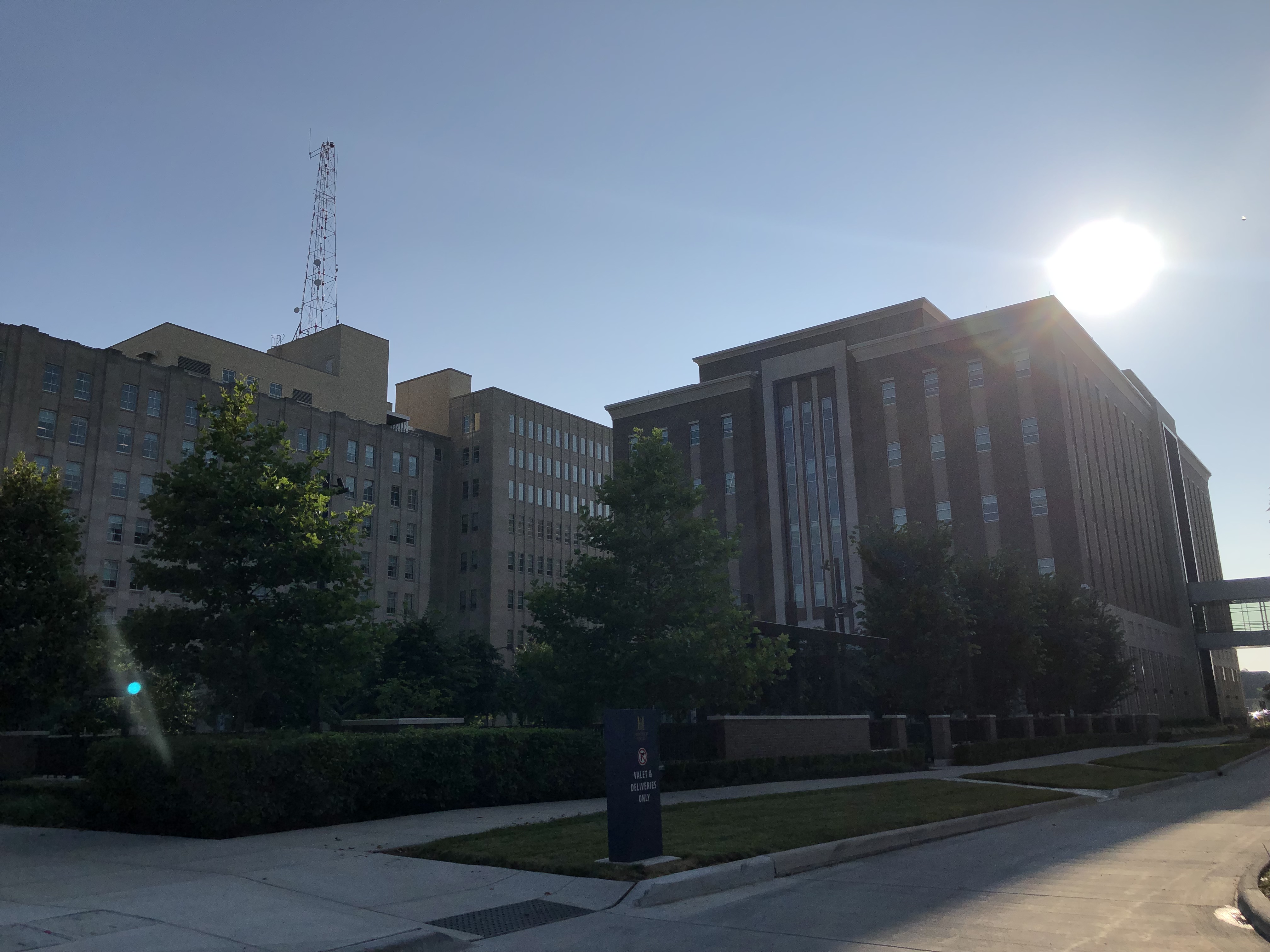|
Boynton–Oakwood Heights (Detroit)
Boynton and Oakwood Heights are the two southernmost List of neighborhoods in Detroit, neighborhoods of the city of Detroit in the U.S. state of Michigan. The two neighborhoods occupy the only portions of Detroit located south of the River Rouge (Michigan), River Rouge. According to the United States Census Bureau, U.S. Census Bureau at the 2010 United States census, 2010 census, the two neighborhoods had a total area of and a population of 8,832. The population decreased 21.9% from 10,516 at the 2000 United States census, 2000 census. The majority of residents reside in the larger Boynton neighborhood, as entire blocks of Oakwood Heights have been cleared out to make room for potential industrial expansion. Located in the heavily industrialized southwestern area of Detroit, the two neighborhoods occupy the entirety of the 48217 ZIP Code. Boynton and Oakwood Heights are densely populated yet highly polluted by major industrial development. The neighborhoods are consistently ... [...More Info...] [...Related Items...] OR: [Wikipedia] [Google] [Baidu] |
List Of Neighborhoods In Detroit
Neighborhoods in Detroit, the United States, provide a general overview of neighborhoods and historic districts within the city. Neighborhood names and boundaries vary in their formality; some are well defined and long established, while others are more informal. Further names and boundaries have evolved over time due to development or changes in demographics. Woodward Avenue, a major a north–south thoroughfare, serves as a demarcation for neighborhood areas on the east side and west side of the city. Map Areas and neighborhoods Downtown Downtown Detroit is the city's central business district and a residential area, bordered by M-10 (Michigan highway), M-10 (Lodge Freeway) to the west, the Interstate 75 in Michigan, Interstate 75 (I-75, Fisher Freeway) to the north, Interstate 375 (Michigan), I-375 (Chrysler Freeway) to the east, and the Detroit River to the south. The area contains many of the prominent skyscrapers in Detroit, including the Renaissance Center, the ... [...More Info...] [...Related Items...] OR: [Wikipedia] [Google] [Baidu] |
Lincoln Park, Michigan
Lincoln Park is a city in Wayne County, Michigan, Wayne County in the U.S. state of Michigan. The population was 38,144 at the 2010 United States Census, 2010 census, down from 40,008 at the 2000 United States Census, 2000 census. With a population density of at the 2010 census, Lincoln Park is the second List of municipalities in Michigan, most-densely populated municipality in the state after Hamtramck, Michigan, Hamtramck. Lincoln Park contains Council Point Park, which dates back to 1763 when Pontiac (Ottawa leader), Chief Pontiac met with other tribal leaders along the banks of the Ecorse River to plot a rebellion against increasing European settlers, specifically those in nearby Fort Detroit. The Potawatomi eventually ceded the land to the French in 1776. Lincoln Park is considered part of the Downriver collection of communities within Metro Detroit. The city borders Detroit to the north and also shares borders with Allen Park, Michigan, Allen Park to the west, Ecorse, M ... [...More Info...] [...Related Items...] OR: [Wikipedia] [Google] [Baidu] |
Detroit Department Of Transportation
The Detroit Department of Transportation (DDOT) (pronounced ) is the primary public transportation operator serving Detroit, Michigan. In existence since 1922, DDOT is a division of the city government, headed by a director appointed by the mayor. Primarily serving Detroit and its enclaves, DDOT is supplemented by suburban service from the Suburban Mobility Authority for Regional Transportation (SMART). In , the system had a ridership of , or about per weekday as of . History Department of Street Railways The DDOT began its life as the Department of Street Railways (DSR) in 1922 after the municipalization of the privately-owned Detroit United Railway (DUR), which had controlled much of Detroit's mass transit operations since its incorporation in 1901. The DSR added bus service when it created the Motorbus Division in 1925. At the height of its operation in 1941, the DSR operated 20 streetcar lines with 910 streetcars. By 1952, only four streetcar lines remained: Woodward ... [...More Info...] [...Related Items...] OR: [Wikipedia] [Google] [Baidu] |
Norfolk Southern Railway
The Norfolk Southern Railway is a Class I freight railroad operating in the Eastern United States. Headquartered in Atlanta, the company was formed in 1982 with the merger of the Norfolk and Western Railway and Southern Railway. The company operates in 22 eastern states, the District of Columbia, and has rights in Canada over the Albany to Montreal route of the Canadian Pacific Kansas City. Norfolk Southern Railway is the leading subsidiary of the Norfolk Southern Corporation. Norfolk Southern maintains 28,400 miles of track, with the rest managed by other parties through trackage rights. Intermodal containers and trailers are the most common commodity type carried by NS, which have grown as the coal business has declined throughout the 21st century; coal was formerly the largest traffic source. The railway offers the largest intermodal rail network in eastern North America. NS was also the pioneer of Roadrailer service. Norfolk Southern and its chief competitor, CSX ... [...More Info...] [...Related Items...] OR: [Wikipedia] [Google] [Baidu] |
Downtown Detroit
Downtown Detroit is the central business district and a Neighborhoods in Detroit, residential area of the city of Detroit, Michigan, United States. Locally, "downtown" tends to refer to the 1.4 square mile region bordered by M-10 (Michigan highway), M-10 (Lodge Freeway) to the west, Interstate 75 in Michigan, Interstate 75 (I-75, Fisher Freeway) to the north, Interstate 375 (Michigan), I-375 (Chrysler Freeway) to the east, and the Detroit River to the south. It may also be used to refer to the Greater Downtown area, a 7.2 square mile region that includes surrounding neighborhoods such as Midtown Detroit, Midtown, Corktown, Detroit, Corktown, Rivertown, and Woodbridge, Detroit, Woodbridge. The city's main thoroughfare M-1 (Michigan highway), M-1 (Woodward Avenue) links Downtown to Midtown Detroit, Midtown, New Center, Detroit, New Center, and the North End, Detroit, North End. Downtown contains much Architecture of metropolitan Detroit, historic architecture, including prominent ... [...More Info...] [...Related Items...] OR: [Wikipedia] [Google] [Baidu] |
Rochester Hills, Michigan
Rochester Hills is a city in Oakland County, Michigan, United States. A northern suburb of Metro Detroit, Detroit, Rochester Hills is located about north of downtown Detroit. As of the 2020 United States census, 2020 census, the city had a population of 76,300. The area was first settled by European Americans in 1817, and organized as Avon Township in 1835. The City of Rochester, Michigan, Rochester incorporated in 1967, while the remaining area of Avon Township was incorporated and renamed the City of Rochester Hills in 1984. Considered a northern suburb of Metro Detroit, Rochester Hills is about north of Detroit. History Prior to European settlement, the area now known as Rochester Hills was inhabited by Native Americans, namely the Potawatomi. The Potawatomi depended on the area's abundant water sources, such as the Clinton River and Paint Creek (Oakland County, Michigan), Paint Creek, to grow crops, fish, and travel. They resided here until the Treaty of Detroit, 1807 Treat ... [...More Info...] [...Related Items...] OR: [Wikipedia] [Google] [Baidu] |
Poverty Thresholds (United States Census Bureau)
For statistical purposes (e.g., counting the poor population), the United States Census Bureau uses a set of annual income levels, the poverty thresholds, slightly different from the federal poverty guidelines. As with the poverty guidelines, they represent a federal government estimate of the point below which a household of a given size has pre-tax cash income insufficient to meet minimal food and other basic needs. Poverty thresholds were originally developed in 1963–64, based largely on estimates of the minimal cost of food needs, to measure changes in the impoverished population. The thresholds form the basis for calculating the poverty guidelines and, like them, are adjusted annually for overall inflation. The same threshold is used throughout the United States and does not vary based on geographical location. There are 48 possible poverty thresholds that a family can be assigned to, which vary based on the family size and the age of its members. If a family's total inc ... [...More Info...] [...Related Items...] OR: [Wikipedia] [Google] [Baidu] |
Marathon Petroleum
Marathon Petroleum Corporation is an petroleum industry in the United States, American petroleum refining, marketing, and transportation company headquartered in Findlay, Ohio. The company was a wholly owned subsidiary of Marathon Oil until a corporate spin-off in 2011. Marathon Petroleum traces its origin from a number of small oil companies in Ohio that banded together in 1887. These formed The Ohio Oil Company established in Lima, Ohio. It became the largest oil producer in the state. By 1889, the company was acquired by the Standard Oil, Standard Oil Trust and six years later its headquarters was moved to Findlay, Ohio, Findlay. In 1906, the company built its first oil pipeline, which connected its facilities in Martinsville, Illinois, and Preble, Indiana. After the Supreme Court of the United States, United States Supreme Court ordered its parent company to break up as a result of the Sherman Antitrust Act, Sherman Anti-Trust Act in 1911, Ohio Oil again became independent. I ... [...More Info...] [...Related Items...] OR: [Wikipedia] [Google] [Baidu] |
Delray, Detroit
Delray is a neighborhood in southwest Detroit in the U.S. state of Michigan. Its area extends south to the River Rouge, east to the Detroit River, west to Fort Street, and north to Clark Street. The two census tracts that cover the neighborhood had a population of 2,783 at the 2010 census. Delray was platted in 1836. Initially a rural area, heavy industry arrived in the 1890s, beginning a prosperous era leading to Delray incorporating as a village in 1897. Delray's population swelled, fueled largely by immigrants from Eastern Europe, and the village's were annexed into the city of Detroit in 1906. By 1930, Delray peaked at approximately 24,000 residents, but the population has dropped precipitously since World War II due to increased industrialization, pollution, and urban decay. By the late 1960s, the city's master plan for Delray was to transition it to a purely industrial area. In 2007, the ''Detroit Metro Times'' described Delray as "the closest thing to a ghost town wit ... [...More Info...] [...Related Items...] OR: [Wikipedia] [Google] [Baidu] |
Springwells, Detroit
Springwells is a List of neighborhoods in Detroit, neighborhood located in Detroit, Michigan, near the Ford Motor Company River Rouge Plant. Etymology The name cites the original village founded in 1783 and absorbed by Detroit in 1885. Father Gabriel Richard established the Springwells School in 1820. Another Springwells began in Springwells Township, Michigan, Springwells Township before also being absorbed in 1925. Named for the abundance of springs and wells. These initiatives are active to date and range in priority from housing development to resident services to specific site-based redevelopment and community rebranding strategies that generally share the desire to improve the community's image and reputation as well as its presentation in media. At times the neighborhood is also called the Springwells neighborhood in regard to city planning. Urban Neighborhood Initiatives, a local non-profit, is working on a Springwells marketing campaign aimed at increasing economic act ... [...More Info...] [...Related Items...] OR: [Wikipedia] [Google] [Baidu] |
M-85 (Michigan Highway)
M-85, also known as Fort Street or Fort Road for its entire length, is a state trunkline highway in the U.S. state of Michigan. The highway serves several Downriver suburbs of Detroit, as well as neighborhoods in the city itself. From its southern terminus at exit 28 on Interstate 75 (I-75) to its second interchange with exit 43 on I-75 in southwest Detroit, M-85 is part of the Lake Erie Circle Tour. In between, it serves mostly residential areas running parallel to a pair of rail lines; the highway carries between 5,000 and 43,000 vehicles per day on average. Once in the city of Detroit, Fort Street runs parallel to I-75 for several miles before they separate near the Ambassador Bridge. The northern end of M-85 is at the intersection with Griswold Street in downtown Detroit, one block away from Campus Martius Park. Two previous unrelated highways bore the M-85 designation. The first was in Montcalm County and the second near Caro. These uses were retire ... [...More Info...] [...Related Items...] OR: [Wikipedia] [Google] [Baidu] |
Interstate 75 In Michigan
Interstate 75 (I-75) is a part of the Interstate Highway System that runs north–south from Miami, Florida, to Sault Ste. Marie, Michigan, Sault Ste. Marie in the Upper Peninsula of the US state of Michigan. I-75 enters the state from Ohio in the south, north of Toledo, Ohio, Toledo, and runs generally northward through Detroit, Flint, Michigan, Flint, and Bay City, Michigan, Bay City, crosses the Mackinac Bridge, and ends at the Canada–United States border, Canadian border in Sault Ste. Marie. The freeway runs for approximately on both of Michigan's major peninsulas. The landscapes traversed by I-75 include Southern Michigan farmland, northern forests, suburban bedroom communities, and the urban core of Detroit. The freeway also uses three of the state's monumental bridges to cross major bodies of water. There are four auxiliary Interstates in the state related to I-75, as well as nine current or former Business routes of Interstate 75 in Michigan, business routes, with ... [...More Info...] [...Related Items...] OR: [Wikipedia] [Google] [Baidu] |







